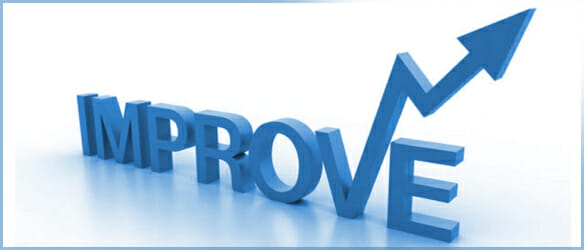Continuous Improvement for Your Association

“If I Can Be Measured, It Can Be Improved”
You may not be aware of the Japanese term “Kaizen” which literally translates into kai (change) and zen (good) and means “improvement.” This term is often used in manufacturing settings as a process to eliminate wasteful steps and streamline operations. The basic goal of the Kaizen process is to seek continuous improvement, accomplished through a series of steps:
- Determine what process or program you want to evaluate.
- Identify the steps in the process or program and evaluate each step in terms of the value it adds to the overall objective.
- Reduce, change, or eliminate those steps that add little value to the process.
- Implement the new process.
- Seek feedback and re-evaluate the process after the changes.
- Repeat the entire process.
In the manufacturing world, these steps are designed to eliminate waste, improve efficiency and improve productivity and profitability. But the same principles can be equally beneficial to association management for a variety of activities such as the membership renewal process, developing a newsletter, generating web traffic, or even something as simple as invoicing. Any activity that has a series of steps involved can be made to be more efficient.
For this exercise, let’s apply these steps to the planning and delivery of a fundraising event. There are so many steps involved in event planning that some steps are undoubtedly more valuable than others.
For most organizations, the planning for a fundraising event begins a year (or more) before the event with the determination of the need and the type of event to be held.
Aside from the basic space needs, what does the location of your event say about the event itself? Does the venue match the fundraising theme? What are the steps involved in selecting the venue? Is it a committee decision or handled by staff?
Consider the pre-event promotion. Who do you invite, how do you communicate with them? How do you determine if your event was successful? Is it an annual event or a new or one-time event? Are you attracting new donors?
At the event itself, what is the draw or entertainment? Do you have a keynote speaker? Is it a board member? If so, have you ever heard them speak in public before? What steps are involved in setting the agenda? Do you simply follow the same format as last year?
After the event, how do you evaluate success? These are the metrics our AMC uses to determine how well our events succeeded:
- Number of attendees – up, down, or flat?
- Profitability – did the event make a profit?
- Attendee experience – the first question on our survey to attendees is “Overall, how would you rate your convention experience?”
These three questions can be measured very specifically, meaning they can be improved annually. These questions are asked constantly before, during and after events. As a result, one client association has seen conference attendance increase by 22% over the past year, and profitability increase by nearly 100% - from a net surplus of $160,000 in 2013 to over $300,000 in 2015. But the most important metric is that over 70% of conference attendees rated their experience as “excellent,” and 98% rated it “excellent” or “good” (3 people out of 550 rated it fair, but you can’t please everyone).
Best practices: Have everyone on your team do a “brain dump” shortly after the event, listing everything that worked and everything they would change next time. Have them do this as soon after the event as possible and have the include everything, down to the registration process and name badges.
The nemesis to this philosophy is the commonly uttered phrase “we’ve always done it this way and it’s worked pretty well,” or my favorite “If it Ain’t Broke, Don’t Fix it” – implying we should wait until it is “broke”?
None of this is to suggest that by implementing this line of thinking your non-profit will suddenly see six figure surpluses at its events. After all, continuous improvement is about small incremental changes and advances. To get there, you have to be willing to ask a lot of questions and answer them honestly.
A word of caution: If you implement this process as your management philosophy, you must be willing to let sacred cows die occasionally and embrace the concept that "change (kai) is good (zen)."
About the author: Tom Hardiman, CAE is a non-profit management veteran and member in the association management firm Hardiman-Williams LLC based in Charlottesville, VA. He can be reached at tom@hardimanwilliams.com.









